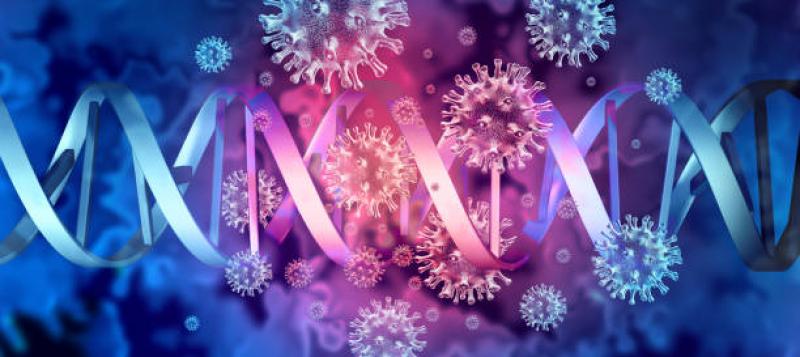Oncolytic virus therapy is a promising and innovative approach to cancer treatment that utilizes viruses to selectively target and destroy cancer cells while sparing healthy cells. Unlike traditional cancer therapies that often have systemic side effects, oncolytic viruses have the potential to offer a more targeted and personalized treatment strategy. This article delves into the principles of oncolytic virus therapy, its mechanisms of action, current applications, ongoing research, and the challenges and future prospects of this groundbreaking cancer treatment.
Understanding Oncolytic Virus Therapy
Oncolytic virus therapy involves the use of naturally occurring or genetically modified viruses that have been engineered to infect and replicate within cancer cells specifically. These viruses can be modified to selectively target tumor cells, leaving healthy cells unharmed or less affected. Once inside the cancer cells, the oncolytic viruses replicate and induce cell lysis, leading to the destruction of cancerous cells and the release of tumor-specific antigens. This process triggers an immune response that further targets and eliminates cancer cells throughout the body.
Mechanisms of Action
The success of oncolytic virus therapy relies on several key mechanisms of action:
1. Selective Replication in Cancer Cells
Oncolytic viruses are engineered to exploit the molecular characteristics and vulnerabilities of cancer cells. These viruses can selectively infect and replicate within tumor cells due to defects in the cellular antiviral defense mechanisms that are often present in cancer cells.
2. Destruction of Cancer Cells
As the oncolytic viruses replicate within cancer cells, they cause cell lysis, leading to the destruction of the tumor. This process releases tumor-specific antigens, exposing them to the patient's immune system.
3. Activation of the Immune System
The release of tumor-specific antigens triggers an immune response, stimulating the activation and proliferation of immune cells, such as T-cells and natural killer cells. This immune response helps in identifying and targeting remaining cancer cells throughout the body.
4. Anti-angiogenic Effects
Oncolytic viruses can also exert anti-angiogenic effects by inhibiting the formation of new blood vessels that feed the tumor, leading to reduced blood supply and further restricting tumor growth.
Current Applications of Oncolytic Virus Therapy
Oncolytic virus therapy is being explored and utilized in various cancer types and treatment settings:
1. Melanoma
Intratumoral injections of oncolytic viruses have shown promising results in patients with advanced melanoma, with some individuals experiencing long-lasting remissions.
2. Glioblastoma
Oncolytic viruses are being investigated as a potential treatment for aggressive brain tumors like glioblastoma, where standard treatments often have limited success.
3. Head and Neck Cancers
Clinical trials are assessing the safety and efficacy of oncolytic virus therapy in treating head and neck cancers, including those that are resistant to conventional therapies.
4. Pancreatic Cancer
Oncolytic viruses are being studied in pancreatic cancer, one of the most challenging cancers to treat, as a potential novel treatment approach.
5. Prostate Cancer
Research is ongoing to evaluate the role of oncolytic viruses in prostate cancer treatment, aiming to improve patient outcomes and quality of life.
Ongoing Research and Future Prospects
Oncolytic virus therapy is a rapidly evolving field, and ongoing research continues to explore new possibilities and improve treatment outcomes:
1. Combination Therapies
Researchers are investigating the potential of combining oncolytic virus therapy with other treatment modalities, such as chemotherapy, radiation therapy, and immunotherapies, to enhance treatment efficacy and synergistic effects.
2. Improving Viral Selectivity
Efforts are underway to enhance the selectivity of oncolytic viruses, making them even more tumor-specific and sparing healthy tissues.
3. Tailored Viral Therapy
As the understanding of cancer biology advances, personalized oncolytic virus therapies tailored to individual patients' tumors and immune profiles may become a reality.
4. Overcoming Immune Resistance
Some tumors can develop resistance to oncolytic virus therapy by inhibiting the immune response. Researchers are exploring strategies to overcome this resistance and maximize treatment effectiveness.
5. Safety and Long-term Effects
Long-term safety data and the potential for late adverse effects of oncolytic virus therapy are subjects of ongoing investigation.
Challenges and Considerations
While oncolytic virus therapy shows great promise, there are several challenges and considerations that researchers and clinicians must address:
1. Immune Response to the Virus
The patient's immune system can recognize and neutralize the oncolytic virus, reducing its effectiveness. Strategies to evade immune detection or enhance viral persistence are under exploration.
2. Limited Tumor Penetration
Oncolytic viruses may have difficulty penetrating certain tumor types or locations. Improving viral distribution within the tumor is an area of active investigation.
3. Ensuring Safety
As oncolytic viruses are live agents, ensuring their safety profile and minimizing the risk of unintended infections are essential.
4. Regulatory and Manufacturing Challenges
Navigating regulatory pathways and scaling up manufacturing processes for oncolytic viruses present logistical challenges.
Oncolytic virus therapy represents a promising and innovative frontier in cancer treatment. By harnessing the potential of viruses to selectively target and destroy cancer cells, oncolytic virus therapy offers a unique and personalized approach to cancer treatment. As ongoing research and clinical trials continue to advance our understanding of this therapeutic modality, oncolytic virus therapy holds the potential to transform cancer treatment, providing new hope for patients and improving the outlook for those affected by this devastating disease.
